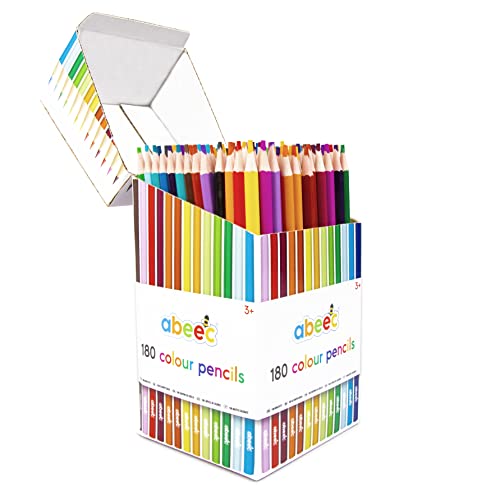Understanding Coloured Pencils: The Basics of Variety and Usability
What Are Coloured Pencils?
Coloured pencils are a versatile art supply used for drawing, colouring, and sketching. They consist of a pigment core encased in wood, plastic, or another material, making them easy to handle and transport. There’s a wide array of options available, ranging from standard wax-based pencils to higher-end oil-based pencils, each designed for different artistic effects.
Types of Coloured Pencils
We often come across two main types of coloured pencils: wax-based and oil-based. Wax-based pencils are softer and allow for easy blending, making them excellent for beginners and casual artists. On the other hand, oil-based pencils are firmer and provide a more refined finish, ideal for detailed work. Additionally, there are watercolour pencils that can be used dry or activated with water to create a paint-like effect, giving even more versatility.
Usability and Comfort
When selecting coloured pencils, the comfort of use is vital, especially during longer drawing sessions. Pencils with a thicker barrel may offer a better grip, reducing hand fatigue. Furthermore, a quality pencil should sharpen easily and maintain a fine point without breaking. Always consider how the model feels in your hand and whether it meets your personal drawing style.
Choosing the Right Type of Coloured Pencils for Your Needs
Assess Your Artistic Goals
Identifying what you want to achieve with coloured pencils will guide your selection. If you’re into detailed illustrations, oil-based pencils might suit you better due to their ability to create sharper lines without smudging. For more casual doodling or blending, you can’t go wrong with wax-based options.
Budget Considerations
Investing in a quality set of coloured pencils can significantly affect your overall art experience. While low-cost options are tempting, they may not provide the vibrancy and blendability required for serious projects. We recommend considering mid-range sets that balance affordability with quality, helping you to refine your skills without breaking the bank.
Brand Reputation and Recommendations
When exploring various brands, read reviews or consult fellow artists to find which pencils consistently perform well. Established brands often invest in superior formulation processes, ensuring better pigmentation and durability. Familiar names in the market also typically provide a range of products that cater to different skill levels and artistic needs.
Exploring Colour Pigmentation: What Makes Good Coloured Pencils Shine?
Understanding Pigment Composition
The richness of colour in a pencil largely depends on its pigment composition. High-quality pencils usually contain a higher concentration of pigment, resulting in vibrant hues and greater lightfastness. Simple experimentation with different brands can reveal which ones offer the colour payoff that truly resonates with your artistic vision.
Layering and Blending
How well colours layer and blend is another key indicator of quality. Good pencils allow for smooth transitions between colours, essential for creating depth in your artwork. We suggest testing blending capabilities by applying multiple layers; higher quality pencils will demonstrate much more remarkable results.
Transparency and Opacity
Pencils vary in transparency; some are more opaque, covering backgrounds with ease, while others may be more transparent, allowing for underlying colours to shine through. This can be crucial depending on the effect you want to achieve. We encourage you to experiment with various styles and techniques to see how transparency plays a role in your work.
Essential Accessories to Enhance Your Coloured Pencil Experience
Sharpeners and Erasers
A good quality sharpener will prolong the life of your pencils, keeping them sharp and ready for detailed work. Look for sharpeners designed specifically for coloured pencils to avoid breakage. Combining this with a reliable eraser will also help you correct mistakes or alter layers without damaging your paper.
Blending Tools
In addition to traditional blending techniques using your fingers or other pencils, we recommend considering blending stumps or tortillons. These tools help achieve smooth transitions without adding too much pressure to your artwork, allowing for control over blending even in tight spaces.
Paper Selection
The type of paper you choose can enhance or hinder your coloured pencil experience. Heavier paper with a bit of texture can grip the pigment better, allowing for layering and depth. Look for papers specifically made for coloured pencils or mixed media to ensure the best results.
Creative Techniques to Maximise Your Coloured Pencil Skills
Layering for Depth
Layering is a widely used technique in coloured pencil art that can produce stunning results. By building up colours gradually, you can create rich, deep tones. Start with lighter colours and gradually add darker shades to build depth and dimension in your artwork.
Scumbling for Texture
Scumbling is a method employed to create texture by applying short, scribbled strokes over an area. This technique is especially effective for representing natural textures like fur, grass, or leaves, as it adds a beautiful organic feel to your work.
Using Water with Coloured Pencils
If you decide to experiment with watercolour pencils, using a wet brush can unleash a whole new dimension to your artworks. Activating the pigments with water not only promotes blending but can also produce stunning wash effects. This technique opens a world of creative possibilities for artists looking to expand their skills and approach.

























